The Forgotten Hormone That Controls Your Hunger, Sleep, and Stress
According to the World Health Organization, over 264 million people worldwide suffer from anxiety disorders, and nearly one-third of adults report insufficient sleep, as cited by the CDC. Central to managing these issues is the hypothalamus, a brain region that orchestrates the release of vital hormones affecting hunger, sleep, and stress. Unfortunately, the subtle symptoms of hormonal imbalance often go unrecognized until they seriously impact health and quality of life.
1. What Is Orexin?

Orexin, also known as hypocretin, is a neuropeptide hormone produced by a small cluster of neurons in the hypothalamus, a region deep within the brain. Discovered in the late 1990s, orexin plays a crucial role in regulating arousal, wakefulness, appetite, and stress response. The hormone exists in two forms: orexin-A and orexin-B, both of which interact with specific receptors throughout the brain and body to influence essential physiological processes.
One of orexin’s most prominent functions is its involvement in maintaining wakefulness and preventing sudden sleep attacks, as highlighted in the sleep disorder narcolepsy. Additionally, orexin stimulates appetite by activating pathways that signal hunger and motivate food-seeking behavior. Emerging research also suggests that orexin influences stress regulation by modulating the body’s response to anxiety and emotional stimuli. Due to its integrated role across multiple systems, orexin serves as a master controller, linking sleep patterns, energy balance, and emotional well-being. For more information, refer to articles from National Institutes of Health (NIH) and Sleep Foundation.
2. Orexin and Appetite Control
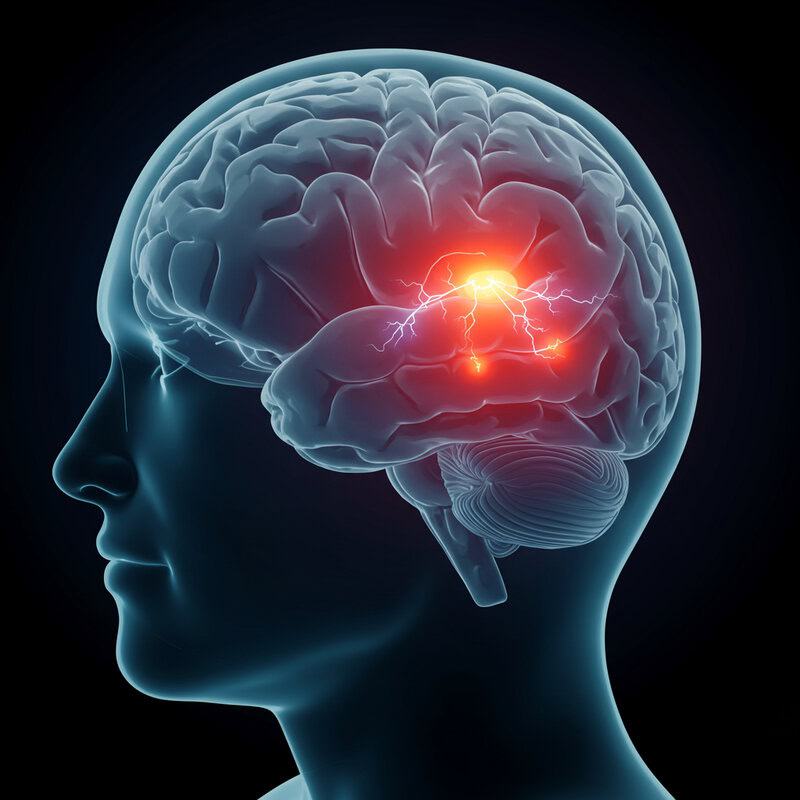
Orexin plays a pivotal role in appetite control by directly stimulating neural pathways that drive the sensation of hunger and increase motivation for food intake. When energy levels drop, orexin-producing neurons in the hypothalamus become activated, promoting alertness and a heightened desire to seek and consume food. Unlike ghrelin (the “hunger hormone” that signals the body to eat) and leptin (the “satiety hormone” that signals fullness), orexin integrates information about energy status, circadian rhythms, and emotional states to modulate appetite in a more dynamic manner.
Imbalances in orexin levels can result in practical signs of dysregulated hunger. For example, individuals with low orexin may experience reduced appetite, fatigue, and unintentional weight loss, while those with overactive orexin signaling might report persistent cravings, overeating, or difficulty feeling satisfied after meals. These symptoms can be subtle yet disruptive, often leading to challenges in weight management and overall well-being. Understanding orexin’s unique role in appetite offers new insights into the complex relationship between brain chemistry and eating behavior, as discussed in detail by the Endocrine Society.
3. The Link to Sleep-Wake Cycles

Orexin is a fundamental regulator of the sleep-wake cycle, supporting sustained wakefulness and preventing inappropriate transitions from wakefulness to rapid eye movement (REM) sleep. Throughout the day, orexin-producing neurons release signals that promote alertness, ensuring individuals remain active and attentive. When orexin levels are optimal, the brain can maintain a stable state of wakefulness and smoothly transition to restful sleep at night. However, a deficiency in orexin is the primary cause of narcolepsy, a neurological disorder characterized by excessive daytime sleepiness, sudden sleep attacks, and episodes of muscle weakness known as cataplexy.
Disruptions in orexin signaling can manifest as fragmented sleep, difficulty staying awake during the day, or trouble falling asleep at night. Common signs to watch for include persistent fatigue, frequent napping, vivid dreams during brief naps, and unpredictable sleepiness that interferes with daily activities. Recognizing these symptoms is crucial for early intervention and effective management of sleep disorders. To learn more about orexin’s role in sleep, consult research from the National Institutes of Health and resources from the Sleep Foundation.
4. Orexin and Stress Response
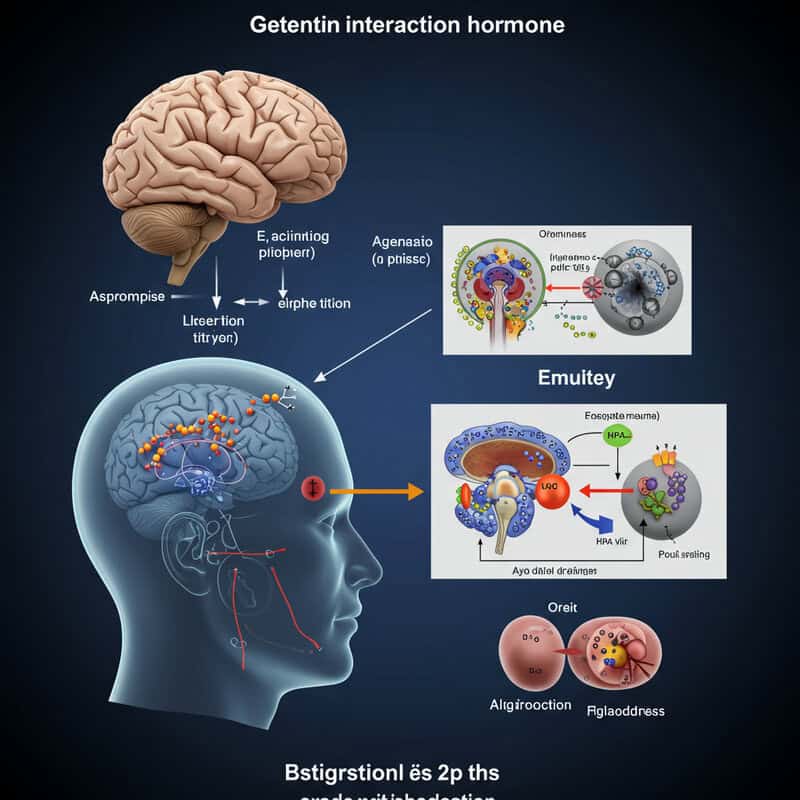
Orexin’s influence extends beyond appetite and sleep—it also plays a significant role in modulating the body’s stress response. When confronted with a stressful situation, orexin activates brain circuits that heighten alertness, increase motivation, and prepare the body for action. This response is closely intertwined with the hypothalamic-pituitary-adrenal (HPA) axis, which is primarily responsible for releasing cortisol, the body’s main stress hormone. While cortisol mobilizes energy reserves and suppresses non-essential functions during stress, orexin amplifies arousal and focus, ensuring that an individual can respond quickly and effectively to challenges.
Unlike cortisol, which can remain elevated during chronic stress and contribute to negative health outcomes like weight gain, sleep disturbance, and immune suppression, orexin’s activation is typically more acute and situational. However, persistent overstimulation of orexin pathways—often as a result of chronic stress—can lead to anxiety, insomnia, and difficulty relaxing. Recognizing symptoms such as irritability, restlessness, disrupted sleep, and persistent fatigue is essential for early intervention. For more on orexin’s role in stress, refer to findings from the Neuroscience & Biobehavioral Reviews and insights provided by Frontiers in Neuroscience.
5. Where Orexin Comes From
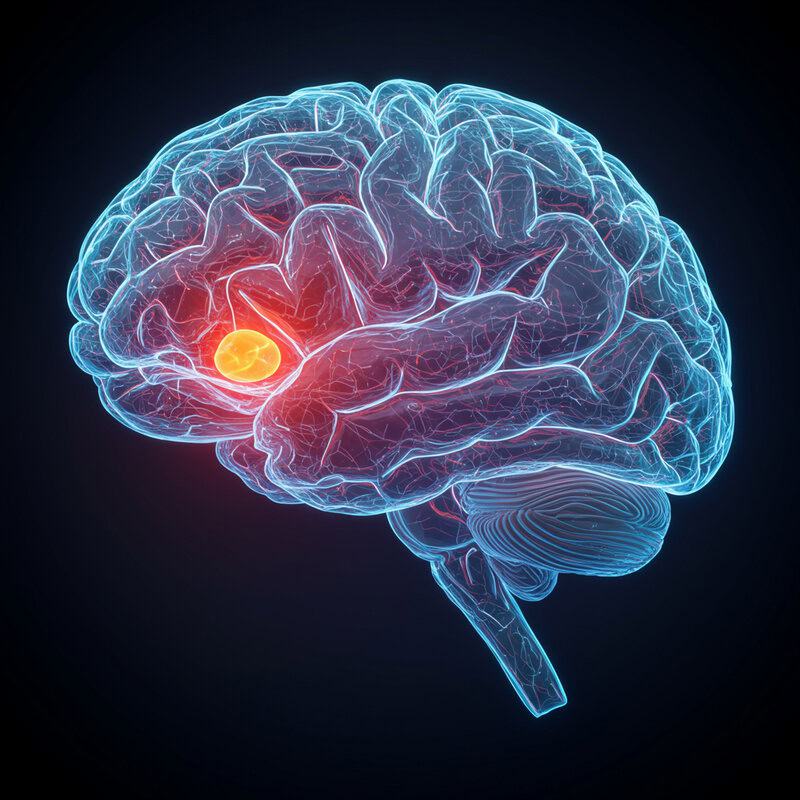
Orexin is synthesized exclusively by a small group of neurons located in the lateral hypothalamus, a region of the brain that acts as the command center for numerous vital functions. The hypothalamus is responsible for orchestrating the body’s internal balance by producing and releasing a variety of hormones, including oxytocin, vasopressin, and the releasing hormones that control the pituitary gland. While hormones like oxytocin regulate social bonding and vasopressin manages water balance, orexin’s primary roles center on the regulation of arousal, appetite, and stress responses.
Dysfunction in the hypothalamus can disrupt orexin production and lead to a cascade of symptoms affecting multiple bodily systems. Warning signs of hypothalamic dysfunction may include unexplained fatigue, sudden weight changes, persistent thirst, irregular body temperature, mood disturbances, and disordered sleep patterns. Because the hypothalamus integrates signals from various parts of the brain and body, any disruption can have widespread effects. For additional information on hypothalamic hormones and dysfunction, explore resources from the Johns Hopkins Medicine and the National Center for Biotechnology Information.
6. How Orexin Balances Energy
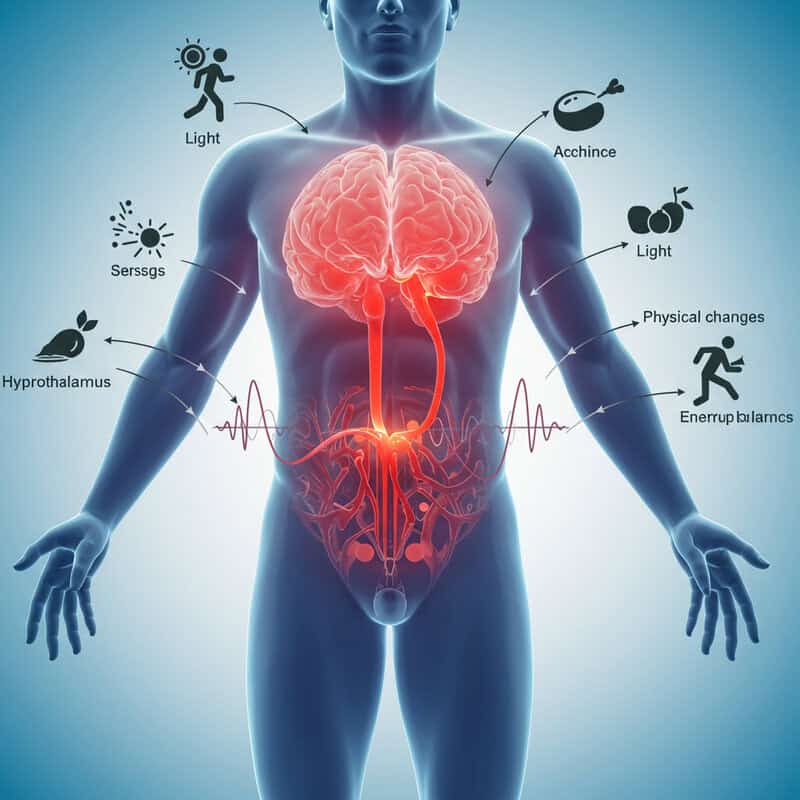
Orexin is a key orchestrator of energy homeostasis, ensuring that the body maintains a stable energy balance throughout the day. These specialized hypothalamic neurons sense changes in the body’s energy stores and external cues such as light and food intake. When energy levels are low—such as after prolonged fasting or intense physical activity—orexin neurons become activated, boosting arousal and motivating behaviors that restore energy, like seeking food or staying alert. Conversely, when energy needs are met, orexin activity decreases, allowing for relaxation and rest.
Real-world examples of energy dips related to orexin include the mid-afternoon “slump” many people experience or the sudden fatigue that follows skipping meals. These energy fluctuations can signal underlying imbalances in orexin regulation. Practical signs of orexin imbalance to watch for include chronic tiredness despite adequate sleep, difficulty staying awake during the day, unpredictable bursts of hunger, and trouble concentrating. Recognizing these patterns is crucial for identifying when the body’s energy balance is off. For a deeper understanding of orexin’s impact on energy regulation, see studies from Frontiers in Endocrinology and educational resources provided by the Sleep Foundation.
7. The Forgotten Hormone’s Daily Rhythms
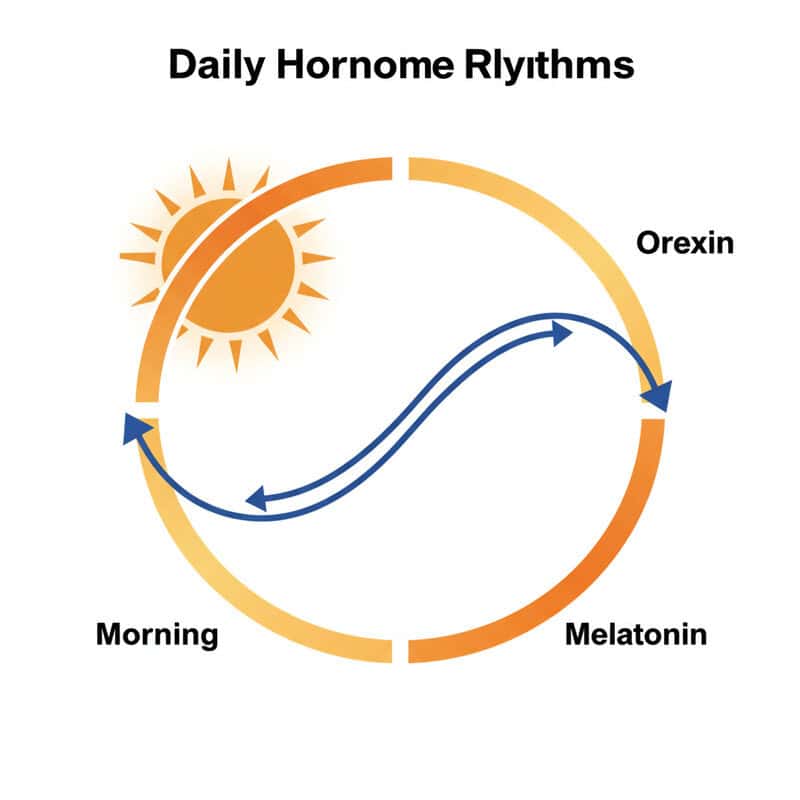
Orexin secretion follows a distinct daily rhythm, peaking during periods when the body needs to be alert and active. Levels of orexin are typically highest in the morning and during times of increased physical or mental demand, gradually tapering off as the day progresses. This pattern is in stark contrast to melatonin, the “sleep hormone,” which rises in the evening to promote drowsiness and prepare the body for rest. The interplay between orexin and melatonin helps coordinate the sleep-wake cycle, ensuring optimal periods of wakefulness and restorative sleep.
To align daily routines with these natural hormonal rhythms, it is helpful to schedule demanding activities—both mental and physical—during orexin’s peak hours in the morning and early afternoon. Creating a consistent bedtime routine and reducing exposure to bright lights in the evening can help support melatonin’s rise and facilitate healthy sleep. Inconsistent sleep patterns, late-night screen use, or irregular meal timing can disrupt these rhythms and lead to fatigue, poor concentration, and mood disturbances. For more about daily hormonal rhythms and how to optimize your schedule, explore resources from the Sleep Foundation and current research reviews.
8. Orexin and Obesity Risk

Emerging research links orexin dysfunction to an increased risk of obesity, highlighting the hormone’s significance in both appetite regulation and energy expenditure. When orexin signaling is impaired, individuals may experience decreased motivation for physical activity, heightened cravings for calorie-dense foods, and disruptions in normal hunger cues. This can create a cycle of overeating and sedentary behavior, both key contributors to weight gain. Orexin’s influence is distinct from leptin resistance, a condition where the brain no longer responds effectively to leptin, the hormone responsible for signaling fullness. While leptin resistance leads to persistent hunger despite adequate energy stores, orexin dysfunction primarily affects wakefulness, energy levels, and the drive to move and eat.
In weight management, it is important to monitor for signs such as increased fatigue, unexplained weight gain, strong cravings, and a lack of motivation to exercise. These may indicate underlying issues with orexin regulation. Addressing sleep quality, stress, and consistent meal timing can help restore hormonal balance. For more information on orexin’s connection to obesity risk, refer to studies from the National Institutes of Health and educational content by the Sleep Foundation.
9. Narcolepsy: A Case Study
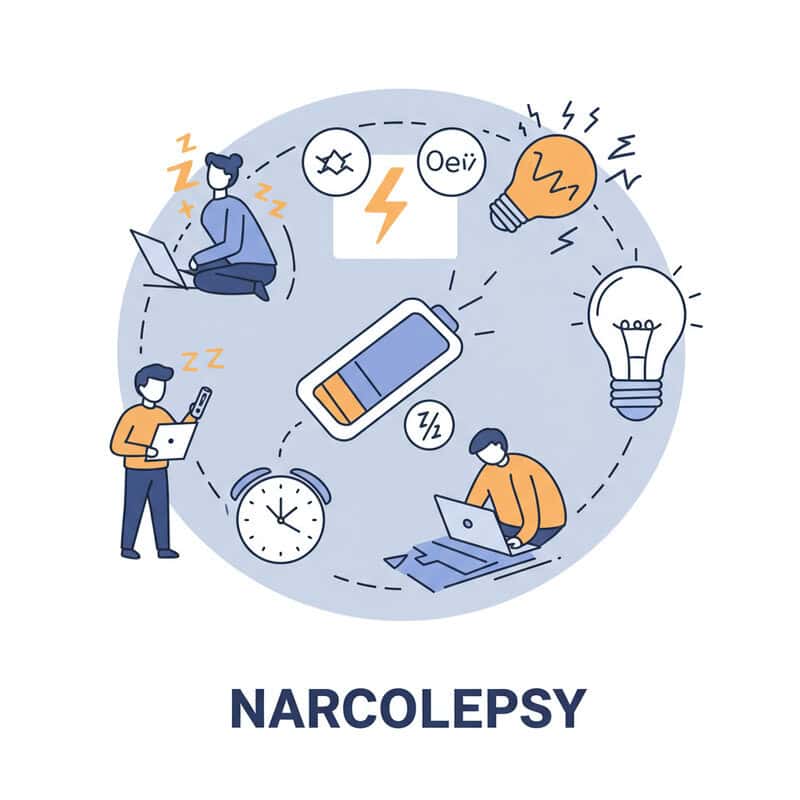
Narcolepsy is a neurological disorder that vividly demonstrates the consequences of orexin deficiency. In people with narcolepsy, the body produces little to no orexin, leading to uncontrollable episodes of daytime sleepiness, sudden “sleep attacks,” and, in some cases, cataplexy—sudden loss of muscle tone triggered by strong emotions. Unlike insomnia, where individuals struggle to fall or stay asleep at night, narcolepsy is characterized by an inability to regulate transitions between sleep and wakefulness, regardless of how much sleep a person gets.
Early symptoms of narcolepsy include excessive daytime drowsiness, frequent napping, vivid dreams, sleep paralysis, and episodes of muscle weakness. These symptoms can severely disrupt daily life and often go unrecognized or are mistaken for depression or chronic fatigue. If you or someone you know experiences these signs, it is crucial to consult a sleep specialist for proper diagnosis and management. Diagnostic steps may include sleep studies, maintaining a sleep diary, and specialized tests to measure orexin levels. For more information on narcolepsy, visit the Sleep Foundation or the National Institute of Neurological Disorders and Stroke.
10. The Hunger-Sleep Connection

Orexin serves as a vital link between hunger and sleep, integrating signals about energy status, food intake, and circadian rhythms. When you’re hungry, orexin levels rise, promoting alertness and motivating you to find food. Conversely, after eating, orexin activity declines, making it easier to relax and eventually sleep. This connection helps ensure the body remains alert when nourishment is needed and can rest when energy stores are sufficient. Disruptions in this system are particularly evident in shift workers, who often eat at irregular times and sleep during the day, contrary to their natural orexin and melatonin cycles.
Real-life impacts of orexin disruption in shift work include increased cravings for high-calorie foods, weight gain, and persistent fatigue, as the body struggles to synchronize hunger and sleep cues. To maintain balance, it is important for shift workers and those with irregular schedules to keep consistent meal and sleep times whenever possible, avoid heavy meals close to bedtime, and limit caffeine late in the day. Creating a dark, quiet sleep environment and practicing good sleep hygiene can also help. For further reading, consult resources from the Sleep Foundation and research from the National Institutes of Health.
11. Orexin’s Role in Motivation

Orexin is not only essential for regulating hunger and sleep but also plays a critical role in sustaining motivation and mental alertness. When orexin neurons are active, they signal the brain to remain alert, focused, and driven to accomplish tasks. This heightened state of arousal is particularly important when pursuing goals that require persistence and effort, such as completing work projects or engaging in physical activity. Orexin’s motivational effects are closely linked to the brain’s reward system, where it interacts with neurotransmitters like dopamine.
While dopamine is often labeled the “pleasure” or “reward” chemical, it primarily reinforces actions that lead to positive outcomes. Orexin, on the other hand, fuels the energy, vigilance, and drive necessary to pursue those rewards. When orexin levels are low, individuals may experience reduced enthusiasm, mental fatigue, and difficulty initiating or sustaining activities. To notice motivational fluctuations, pay attention to patterns of mental alertness, ability to concentrate, and willingness to tackle challenges throughout the day. Consistent dips in motivation, even after adequate rest and nutrition, may suggest an imbalance in orexin or related pathways. For more insight, review articles from Frontiers in Neuroscience and the National Institutes of Health.
12. How Stress Alters Orexin Levels

Stress and orexin are tightly linked in a feedback loop that can significantly impact physical and mental health. Acute stress, such as a sudden deadline or a brief argument, temporarily elevates orexin levels to enhance alertness and readiness to respond. This short-term surge helps sharpen focus and mobilize energy, allowing the body to cope with immediate challenges. However, when stress becomes chronic—persisting for weeks or months—the sustained elevation of orexin can disrupt normal patterns of sleep, appetite, and emotional regulation.
Chronic stress leads to overactive orexin signaling, which may result in insomnia, increased anxiety, and heightened food cravings. Over time, the continual strain exhausts the body’s ability to maintain balance, potentially causing orexin levels to crash, leading to fatigue, low motivation, and even depressive symptoms. Signs of prolonged imbalance include persistent sleep troubles, irritability, loss of appetite control, and ongoing feelings of restlessness or exhaustion. Recognizing these patterns is vital for timely intervention. For more on the dynamic between stress and orexin, consult reviews from Frontiers in Neuroscience and research published by the National Institutes of Health.
13. Food Choices and Orexin

The foods you eat have a direct impact on orexin production and, consequently, your alertness, hunger, and energy levels. Diets high in simple sugars and refined carbohydrates can cause rapid spikes in blood sugar, followed by sharp drops that suppress orexin activity and induce fatigue or drowsiness. In contrast, balanced meals that include complex carbohydrates, lean proteins, and healthy fats provide a steady release of energy, supporting optimal orexin function and sustained alertness throughout the day. Amino acids, particularly those found in protein-rich foods, are essential for the synthesis of orexin in the hypothalamus.
Consuming a diet dominated by sugary snacks and processed foods can lead to cycles of hunger, cravings, and energy crashes, while balanced meals help stabilize orexin activity. Practical eating tips include starting the day with a protein-rich breakfast, incorporating whole grains and vegetables into meals, and avoiding excessive sugar intake, especially in the afternoon or evening. Eating at regular intervals and staying hydrated also promote healthy orexin rhythms. For further reading on how nutrition influences orexin and brain health, visit the National Institutes of Health and Sleep Foundation.
14. The Role in Emotional Regulation
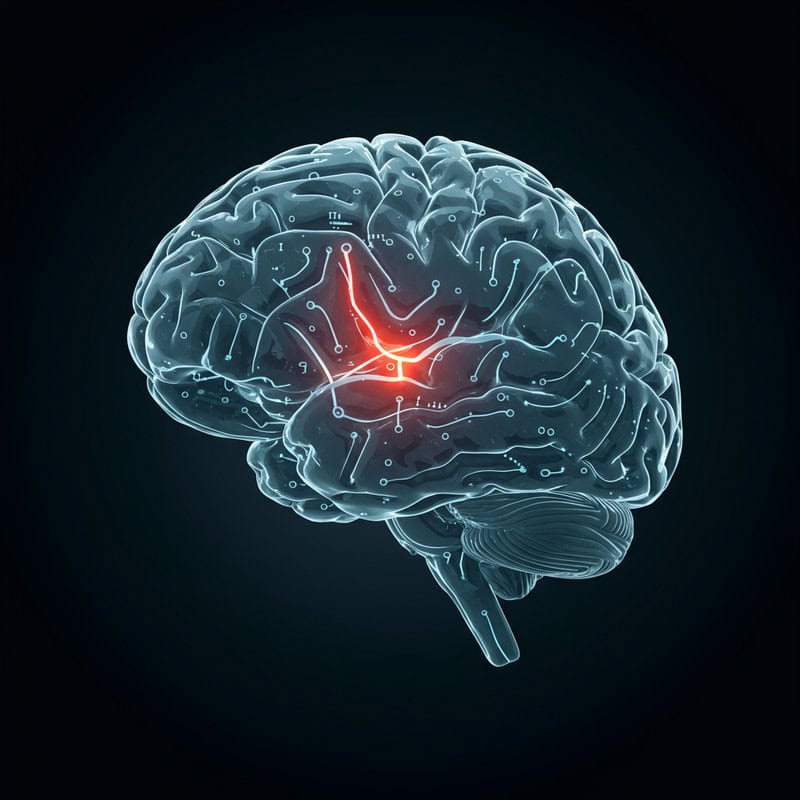
Orexin is increasingly recognized for its involvement in emotional regulation and mood stability. Through its widespread connections in the brain, orexin interacts with neural circuits that process emotions, anxiety, and stress. This hormone helps modulate arousal and vigilance, ensuring the brain can respond appropriately to positive and negative stimuli. In contrast, serotonin—another key neurotransmitter—is more directly linked to feelings of well-being, happiness, and emotional balance. While serotonin primarily controls mood through pathways in the limbic system, orexin influences emotional responsiveness by regulating levels of alertness and readiness to act.
Disruptions in orexin signaling can lead to emotional instability, increased irritability, and difficulty managing stress. Mood swings, sudden shifts from motivation to fatigue, and feelings of overwhelm may all indicate an imbalance. Paying attention to changes in mood, especially when accompanied by altered sleep or appetite, can help identify issues with orexin regulation. If you notice persistent mood swings, anxiety, or loss of motivation, consider consulting a healthcare professional. For more on the relationship between orexin and emotion, review research from Frontiers in Neuroscience and resources by the Sleep Foundation.
15. Orexin and Physical Performance

Orexin significantly influences physical stamina, endurance, and overall energy output. When orexin levels are optimal, they promote heightened alertness and motivate the body to engage in movement and physical activity. This makes orexin a key driver behind the feeling of being “energized” or ready to take on physical challenges. In contrast, a sedentary lifestyle can blunt orexin signaling, leading to decreased energy, increased fatigue, and reduced motivation for exercise. Regular physical activity, on the other hand, stimulates orexin production, creating a positive feedback loop that enhances both mental and physical performance.
People who lead more active lives typically report fewer episodes of unexplained tiredness and have an easier time maintaining a consistent exercise routine. If you experience persistent fatigue, lack of motivation to move, or difficulty sustaining physical effort despite adequate rest and nutrition, it may be worth considering whether orexin imbalance is a factor. Such symptoms are especially notable if other causes, like thyroid dysfunction or anemia, have been ruled out. For more details on orexin’s role in physical performance and fatigue, review findings from the National Institutes of Health and expert guidance from the Sleep Foundation.
16. Sleep Medications and Orexin

Recent advancements in sleep medicine have led to the development of drugs that specifically target orexin receptors to treat insomnia and other sleep disorders. These medications, known as orexin receptor antagonists (such as suvorexant and lemborexant), work by blocking the action of orexin, thereby reducing wakefulness and making it easier to fall and stay asleep. This mechanism is notably different from older sleep aids like benzodiazepines and non-benzodiazepine hypnotics (e.g., zolpidem), which act primarily on GABA receptors to induce sedation and may carry a higher risk of dependence and next-day drowsiness.
Orexin-targeting medications tend to preserve natural sleep architecture and carry less risk of grogginess or cognitive impairment the next day. If you are considering sleep medication, it is important to discuss the options with your healthcare provider. Ask whether an orexin receptor antagonist might be appropriate for your specific sleep issues, what side effects you should be aware of, and how these medications compare with traditional sleep aids. For more detailed information, review resources from the Sleep Foundation and prescribing guidelines provided by the National Institutes of Health.
17. Orexin and Anxiety Disorders
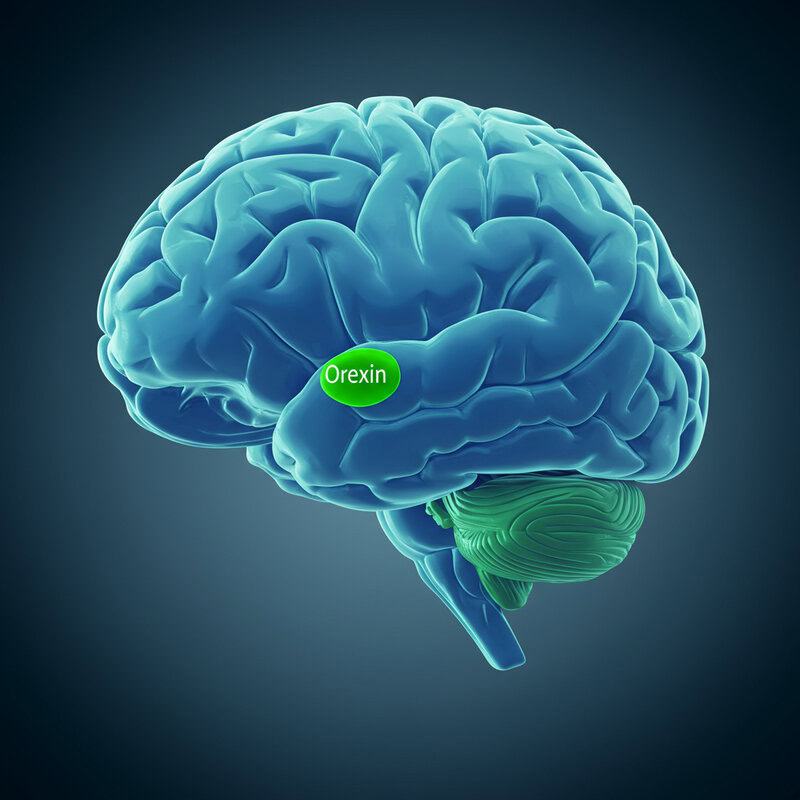
Orexin has a significant impact on anxiety symptoms due to its role in arousal, vigilance, and the body’s stress response. Elevated orexin activity can intensify feelings of restlessness and hyper-alertness commonly seen in anxiety disorders. Unlike the calming effects of the GABA pathway, which inhibits neural activity and promotes relaxation, or the mood-stabilizing effects of serotonin, orexin’s function is to increase wakefulness and readiness to react. When overactive, this system can lead to persistent worry, racing thoughts, and a heightened stress response even in the absence of immediate threats.
Warning signs that anxiety may be linked to orexin imbalance and require further evaluation include chronic sleep disturbances, ongoing muscle tension, difficulty concentrating, frequent panic attacks, and a sense of being “on edge” most of the time. These symptoms can interfere with daily life and may not respond to typical relaxation strategies. If you or someone you know experiences severe or persistent anxiety symptoms, it’s important to consult a mental health professional. For more information on the connection between orexin and anxiety, see research from Frontiers in Neuroscience and the Sleep Foundation.
18. The Gut-Brain Axis and Orexin
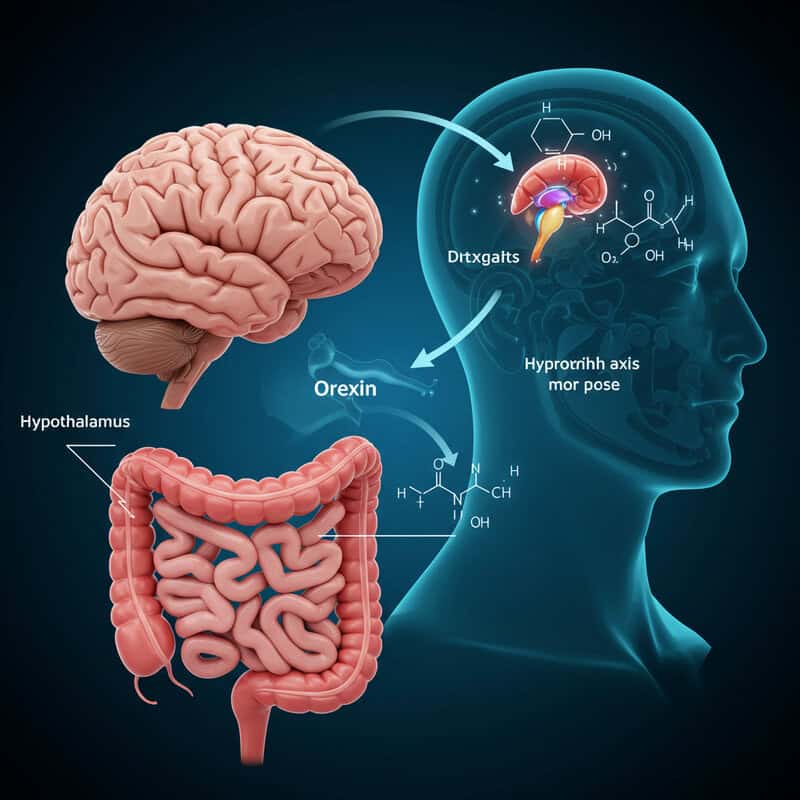
The gut-brain axis represents the complex, bidirectional communication between the digestive system and the brain, with orexin serving as a critical mediator in this relationship. Signals from the gut, such as hormones released during digestion and the activity of gut microbiota, influence orexin-producing neurons in the hypothalamus. These signals can affect hunger cues, satiety, and even sleep quality. For example, disruptions in gut health—like imbalances in beneficial bacteria or chronic inflammation—may lead to altered orexin activity, resulting in increased cravings, irregular appetite, or disturbed sleep patterns.
Real-world impacts of this connection are evident in people who experience digestive discomfort, bloating, or irregular bowel movements often reporting poor sleep and fluctuating energy levels. Maintaining a healthy gut can therefore support balanced orexin signaling, promoting optimal hunger, alertness, and restorative sleep. Simple gut-friendly habits include eating a fiber-rich diet, consuming fermented foods (like yogurt and kefir), staying hydrated, and reducing intake of processed foods. For further insight into the gut-brain axis and orexin, see research from the National Institutes of Health and educational guides by the Sleep Foundation.
19. Orexin and Addiction Risk

Orexin plays a significant role in the brain’s reward system, influencing motivation and the pursuit of pleasurable activities. Orexin-producing neurons interact closely with the brain’s dopamine circuits, amplifying the desire for rewarding experiences—ranging from food and social interaction to potentially addictive substances. While dopamine is often considered the primary driver behind reward-seeking behavior, orexin’s involvement intensifies cravings and reinforces habits, making it a critical factor in the development and persistence of addictive behaviors.
Research shows that heightened orexin activity can increase the risk of substance use disorders, compulsive eating, and other habit-forming activities by strengthening the connection between environmental cues and the urge to seek rewards. This is particularly relevant for individuals struggling with cravings for substances like nicotine, alcohol, or high-sugar foods. Warning signs to watch for include persistent or overwhelming cravings, difficulty resisting urges, and engaging in habits despite negative consequences. Recognizing these patterns early can support healthier choices and timely intervention. For further reading on orexin’s impact on addiction and reward, explore studies from the National Institutes of Health and educational resources by the Sleep Foundation.
20. The Genetic Side of Orexin

Genetic factors play a crucial role in determining orexin expression and function. Variations in genes that encode orexin peptides or their receptors can significantly influence an individual’s susceptibility to disorders like narcolepsy, obesity, and certain mood disturbances. For example, rare mutations in the HCRT gene (which codes for orexin) or its receptor genes have been linked to familial cases of narcolepsy and even some sleep and appetite abnormalities in otherwise healthy individuals. These genetic differences can explain why some families have a higher prevalence of sleep disorders, chronic fatigue, or metabolic issues compared to others.
Family case comparisons often reveal patterns such as several relatives experiencing excessive sleepiness, irregular eating habits, or mood swings. If multiple family members display similar unexplained symptoms, it may be worth considering genetic counseling. Genetic counseling can help assess risk, provide information on testing, and offer guidance on management and prevention strategies tailored to your genetic background. For more on orexin genetics and when to seek expert advice, review research from the National Institutes of Health and guidance from the MedlinePlus Genetics portal.
21. Orexin and Immune Function

Orexin’s role extends beyond the regulation of sleep, hunger, and stress; recent research highlights its involvement in immune system function as well. Orexin-producing neurons appear to communicate with various immune pathways, influencing inflammatory responses and the body’s ability to combat infections. Of particular interest is the link between orexin and autoimmune narcolepsy—a condition in which the immune system mistakenly attacks and destroys orexin-producing cells in the hypothalamus. This loss leads to the classic symptoms of narcolepsy, including overwhelming daytime sleepiness and sudden muscle weakness, and provides a striking example of how immune dysfunction can directly impact orexin signaling.
Persistent, unexplained fatigue may sometimes signal underlying immune-related disturbances affecting orexin or other neuropeptides. If you experience chronic tiredness, poor sleep despite adequate rest, or neurological symptoms such as sudden muscle weakness or vivid dreams, it may be worth consulting a healthcare provider to rule out autoimmune conditions or other immune dysfunctions. Understanding orexin’s complex connection to immunity is an active area of research. For more details, consult studies from the National Institutes of Health and clinical guidance from the MedlinePlus Genetics.
22. How Aging Impacts Orexin
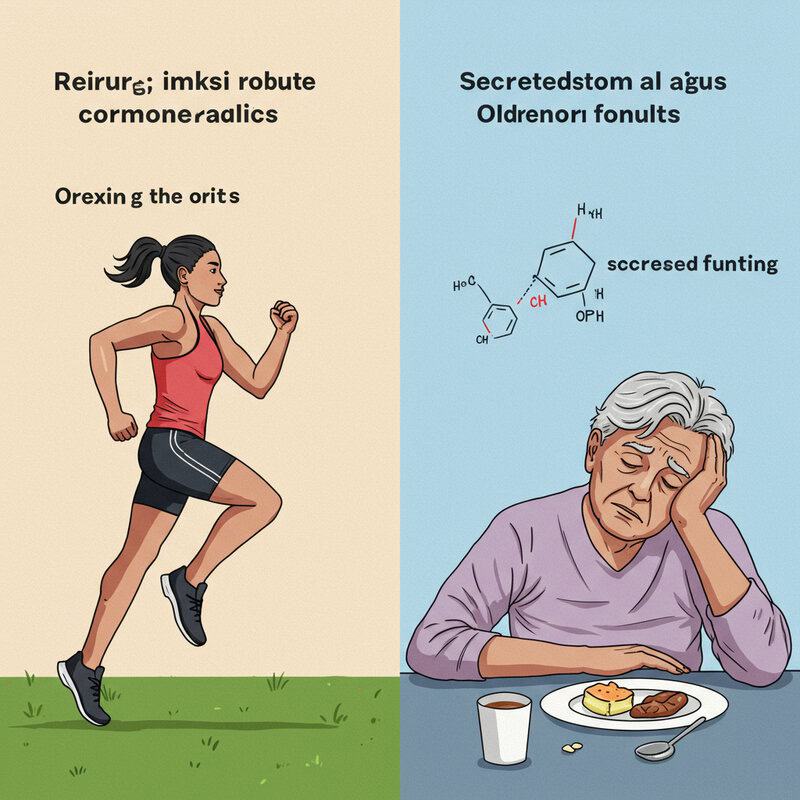
As people age, the production and activity of orexin naturally decline, contributing to changes in sleep patterns, appetite, and overall energy levels. In younger adults, robust orexin signaling helps maintain alertness, drive, and consistent sleep-wake cycles. However, older adults often experience lighter, more fragmented sleep, increased fatigue, and sometimes diminished appetite—symptoms closely linked to decreased orexin function. This decline is thought to be a factor in common age-related issues such as insomnia, reduced physical activity, and even mood disturbances.
Comparing young and older adults, research shows marked differences in orexin neuron density and hormone output, with younger individuals exhibiting higher levels and greater responsiveness. To support healthy aging and counteract the effects of declining orexin, practical strategies include maintaining a regular sleep schedule, engaging in daily physical activity, eating balanced meals with adequate protein, and getting exposure to natural daylight. Managing stress and prioritizing social engagement can also help sustain orexin and overall well-being. For more insights into the relationship between aging and orexin, review findings from the National Institutes of Health and aging research from the Sleep Foundation.
23. Orexin and Depression

Research increasingly suggests that orexin levels are closely linked to depressive symptoms. Low orexin activity can contribute to hallmark features of depression, such as persistent fatigue, lack of motivation, disrupted sleep, and changes in appetite. While depression is often associated with deficits in serotonin—a neurotransmitter responsible for mood regulation—orexin’s role is more related to energy, arousal, and the ability to engage with daily life. Unlike serotonin deficits, which typically lead to low mood and emotional numbness, orexin deficiency is associated with apathy, daytime sleepiness, and a sense of being “drained.”
If you notice ongoing changes in sleep (such as insomnia or hypersomnia), profound tiredness despite rest, lack of interest in previously enjoyed activities, or significant shifts in appetite and weight, it may be a sign of depression involving orexin disruption. These symptoms warrant a mental health screening, especially if they persist for several weeks and interfere with work, relationships, or self-care. For more on the interplay between orexin and depression, see research from the National Institutes of Health and mental health resources from the Sleep Foundation.
24. Light Exposure and Orexin
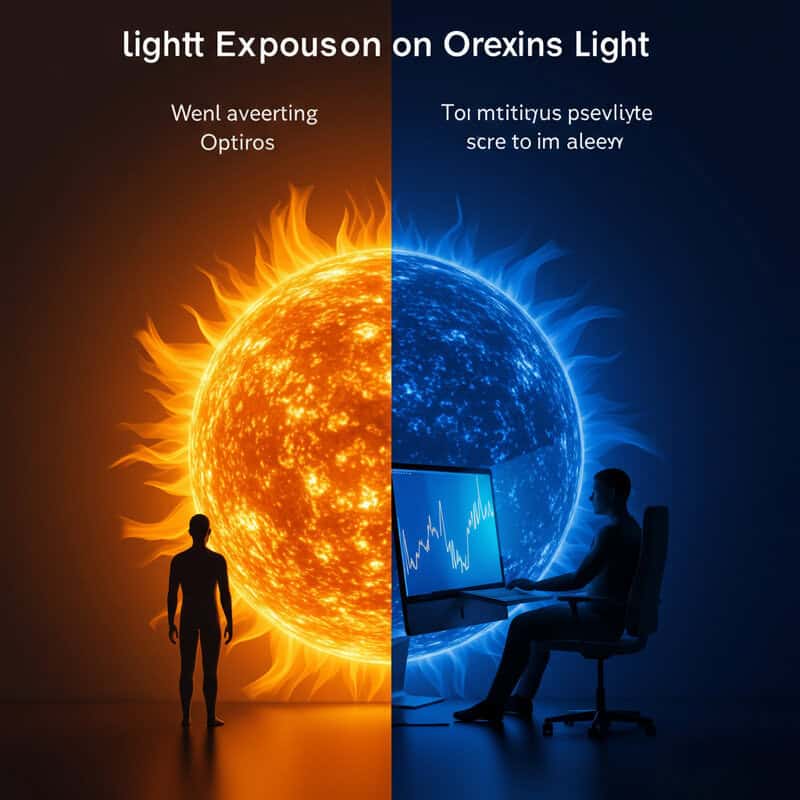
Light exposure, especially sunlight and blue light, has a profound impact on orexin activity and the regulation of sleep-wake cycles. Natural sunlight stimulates the hypothalamus, signaling the body to increase orexin production and promote wakefulness and alertness during the day. In contrast, exposure to blue light from screens in the evening can disrupt the natural decline of orexin and delay melatonin release, making it harder to wind down for sleep. This effect is particularly pronounced in shift workers, who often work irregular hours and are exposed to artificial lighting at night while missing out on daytime sunlight.
Real-world examples include night-shift employees who struggle with sleepiness during work but experience insomnia after their shift, due in part to misaligned orexin signaling. To support healthy orexin rhythms, practical strategies include maximizing exposure to natural light in the morning, taking outdoor breaks whenever possible, and minimizing blue light exposure in the evening by using screen filters or dimming electronic devices. Creating a dark, restful environment before bedtime also helps cue the body for sleep. For more information, refer to the Sleep Foundation and research from the National Institutes of Health.
25. Exercise and Orexin Release

Physical activity is a powerful stimulator of orexin release, directly enhancing alertness, mood, and energy levels. When you engage in regular exercise—whether aerobic, strength-based, or even moderate movement—orexin-producing neurons in the hypothalamus become more active, promoting feelings of vitality and mental sharpness. In contrast, a sedentary lifestyle can dampen orexin production, leading to increased daytime fatigue, sluggishness, and even disrupted sleep-wake cycles. Research indicates that individuals who maintain consistent physical activity have greater orexin signaling and experience fewer dips in energy throughout the day.
Comparing sedentary and active habits, those who sit for prolonged periods are more likely to report persistent tiredness, poor concentration, and irregular appetite. To harness the benefits of orexin, aim for brief movement breaks every hour—simple stretches, a quick walk, or light activities can be remarkably effective. Incorporating regular exercise routines, such as morning walks or evening yoga, further supports orexin balance. For more on the connection between exercise and orexin, review studies from the National Institutes of Health and practical advice from the Sleep Foundation.
26. Orexin’s Role in Alertness
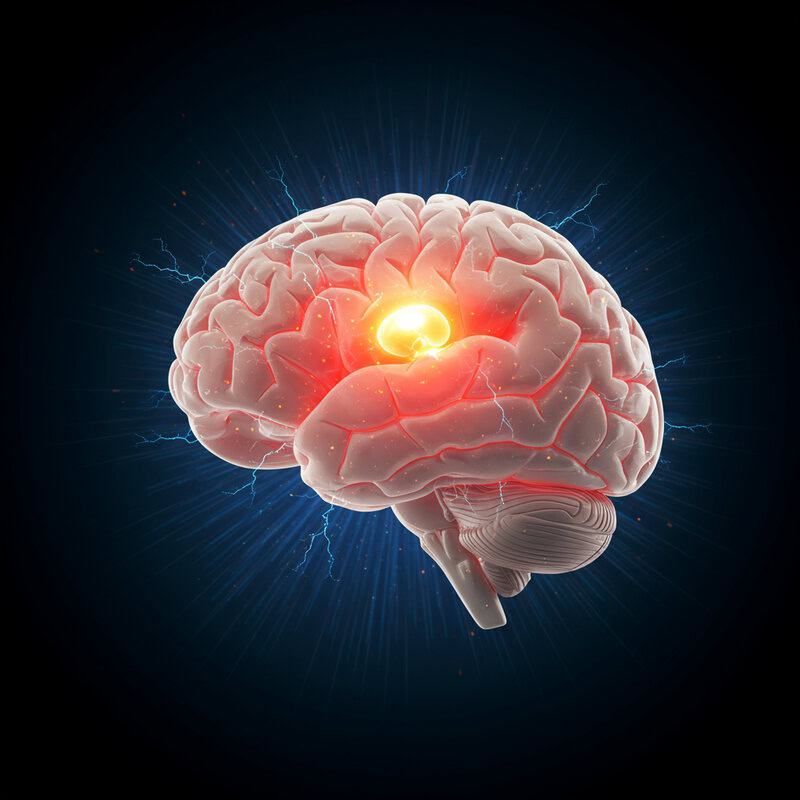
Orexin is a principal neurochemical responsible for maintaining sustained wakefulness and mental clarity throughout the day. When orexin-producing neurons in the hypothalamus are activated, they stimulate widespread regions of the brain to promote alertness, prevent sudden sleep episodes, and keep cognitive performance high. This effect is especially crucial for tasks that require prolonged attention and quick reflexes, such as driving or studying. Orexin’s natural wake-promoting influence is often compared to the effects of caffeine, a well-known stimulant that blocks adenosine receptors to reduce drowsiness.
While caffeine offers a temporary boost in energy, it does not directly influence the orexin system and can lead to energy crashes as its effects wear off. In contrast, healthy orexin rhythms support consistent, sustained alertness without abrupt fluctuations. Recognizing dips in alertness can involve noticing symptoms like heavy eyelids, frequent yawning, reduced focus, and mental “fog.” These signs may be more pronounced after meals, during long periods of inactivity, or in poorly lit environments. For a deeper understanding of how orexin supports alertness and how it differs from stimulants like caffeine, consult research from the National Institutes of Health and educational resources by the Sleep Foundation.
27. The Hidden Impact on Metabolism
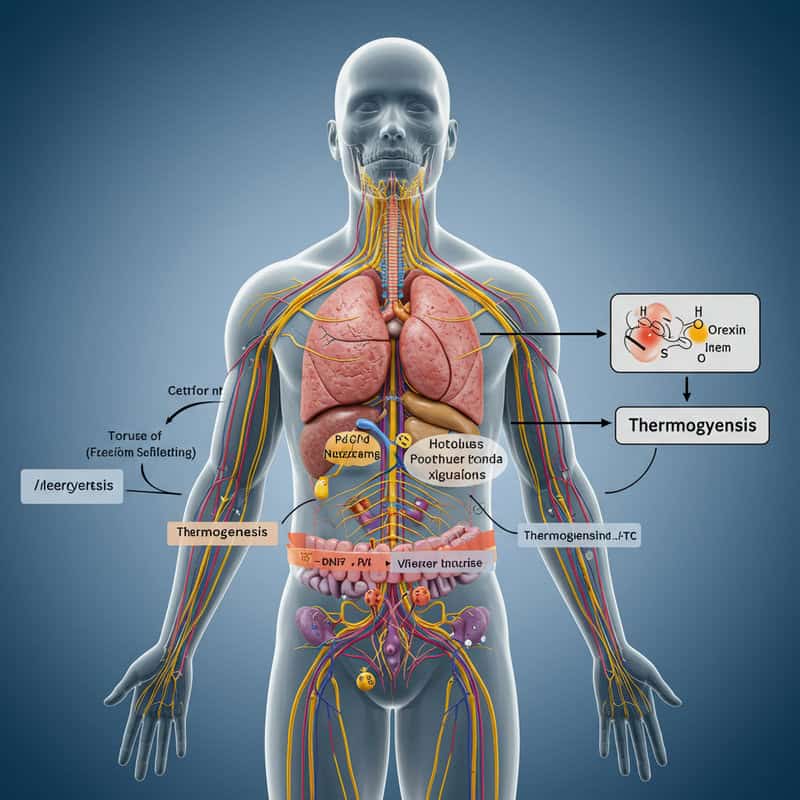
Orexin plays a pivotal yet often overlooked role in regulating metabolic rate and overall energy expenditure. By stimulating both the central nervous system and peripheral tissues, orexin enhances thermogenesis—the process by which the body produces heat—and increases the breakdown of stored energy. Individuals with robust orexin signaling typically exhibit a faster metabolism, which helps maintain healthy body weight and supports efficient calorie utilization. In contrast, reduced orexin activity can lead to a slower metabolism, making it easier to gain weight and harder to lose it, even when caloric intake is controlled.
Signs of metabolic slowdown linked to low orexin levels include persistent fatigue, unexplained weight gain, feeling cold frequently, sluggish digestion, and difficulty with weight loss despite regular exercise and mindful eating. These symptoms may be particularly noticeable in people who experience disrupted sleep, chronic stress, or prolonged inactivity, all of which can suppress orexin production. Monitoring these signs and maintaining a balanced lifestyle with regular movement, stress management, and good sleep hygiene can help support metabolic health. For more information on orexin’s impact on metabolism, explore research from the National Institutes of Health and guidance from the Sleep Foundation.
28. Orexin and Pain Sensitivity
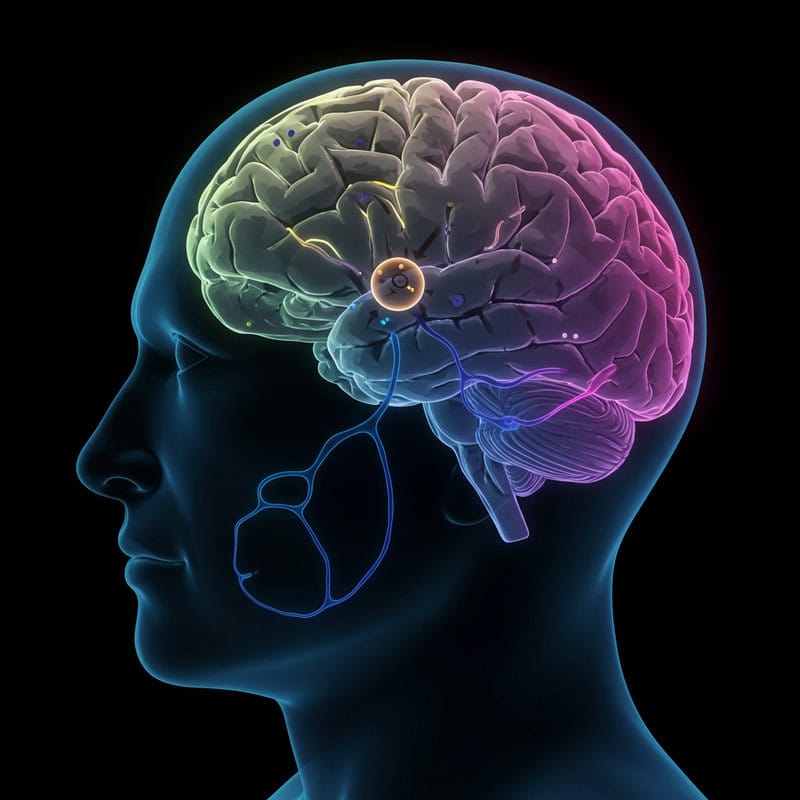
Orexin is increasingly recognized for its role in modulating pain sensitivity and perception. Orexin-producing neurons interact with pain-processing pathways in the brain and spinal cord, influencing how pain signals are transmitted and interpreted. Elevated orexin levels can enhance resilience to pain, making discomfort feel less intense, while low orexin activity may heighten pain sensitivity and contribute to chronic pain conditions. This effect is distinct from the action of endorphins, which are natural opioids that directly block pain signals and produce a feeling of euphoria.
Unlike endorphins, which provide short-term pain relief, orexin’s effects on pain are more closely linked to overall arousal and stress responses. Chronic disruptions in orexin—such as those caused by poor sleep, prolonged stress, or metabolic issues—can exacerbate pain symptoms and lower pain tolerance. Individuals with chronic pain should watch for patterns such as increased discomfort during periods of fatigue, poor sleep, or emotional distress, as these may signal orexin involvement. For a deeper dive into orexin’s role in pain modulation, review studies from the National Institutes of Health and insights from Sleep Foundation.
29. The Social Side of Orexin

Orexin’s influence extends into the realm of sociability and social interaction. Research suggests that orexin enhances arousal, alertness, and engagement, which are crucial for participating in meaningful social activities. When orexin levels are optimal, individuals are more likely to feel energized, interested in connecting with others, and capable of responding to social cues. This social drive is distinct from the effects of oxytocin, often called the “bonding hormone,” which specifically promotes trust, empathy, and emotional closeness during interactions.
While oxytocin fosters deep emotional connections and bonding, orexin provides the foundational energy and alertness necessary to seek out and enjoy social experiences. Noticeable changes in social behavior—such as withdrawal from group activities, lack of interest in conversation, or a preference for solitude—can sometimes reflect shifts in orexin activity, especially if accompanied by fatigue or disrupted sleep. Monitoring these changes is important, as they may signal broader issues with mood, energy, or even underlying health problems. For further insight into the relationship between orexin and sociability, review studies from the National Institutes of Health and social health resources by the Sleep Foundation.
30. Orexin and Learning Ability
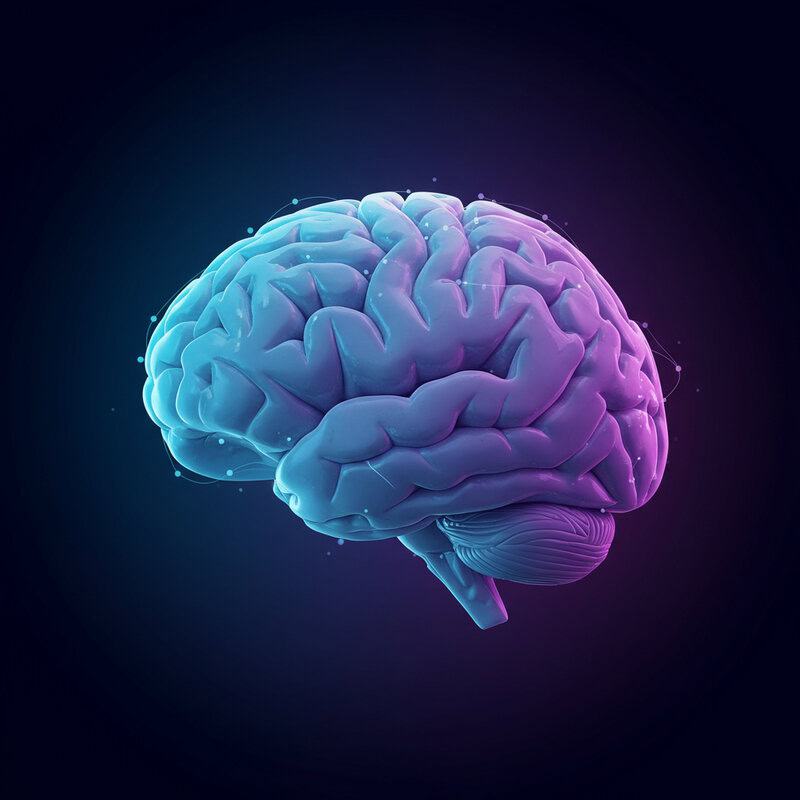
Orexin is integral to cognitive processes such as attention, memory formation, and learning ability. By promoting wakefulness and mental alertness, orexin enhances the brain’s capacity to absorb, retain, and process new information. This hormone works in tandem with neurotransmitters like acetylcholine, which is crucial for attention and the encoding of memories. While acetylcholine directly facilitates synaptic plasticity and learning, orexin ensures that the brain remains engaged and motivated throughout cognitive tasks, sustaining focus during periods of mental effort.
When orexin levels are low, individuals may struggle with concentration, experience mental “fog,” and find it challenging to learn or recall information—symptoms often exacerbated by poor sleep or chronic stress. Practical tips to support orexin and cognitive performance include maintaining regular sleep routines, incorporating movement breaks during study or work sessions, eating balanced meals to prevent energy dips, and minimizing distractions in the environment. For more on orexin’s role in learning and cognition, consult research from the National Institutes of Health and educational guidance from the Sleep Foundation.
31. Chronic Illness and Orexin
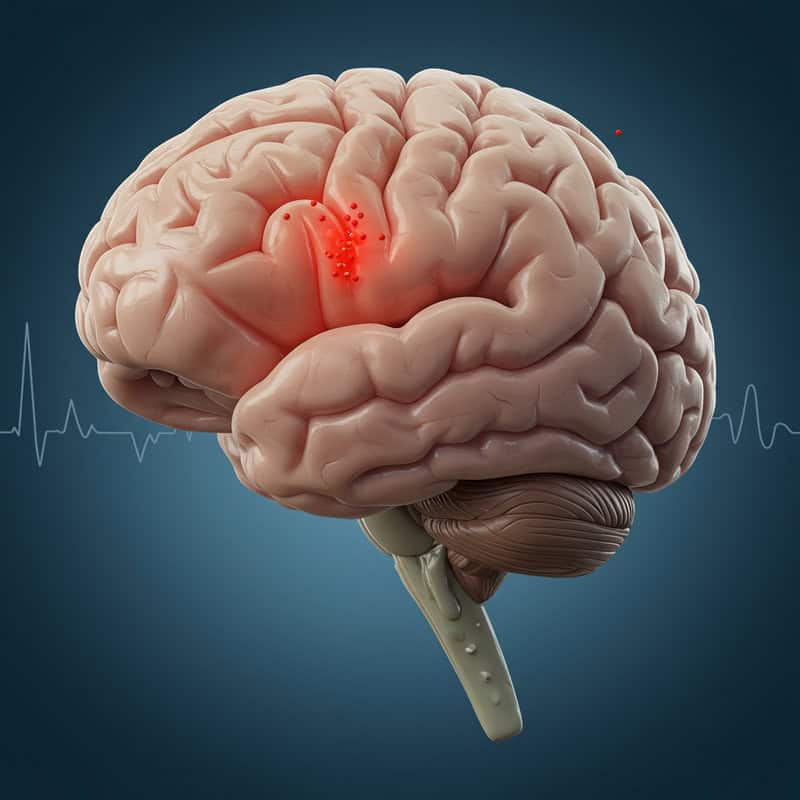
Chronic illnesses can significantly disrupt orexin signaling, contributing to symptoms such as persistent fatigue, sleep disturbances, and changes in appetite. In conditions like diabetes, fluctuating blood sugar levels and insulin resistance can impair the function of orexin-producing neurons, leading to erratic energy levels and increased risk of sleep disorders. Similarly, multiple sclerosis (MS)—an autoimmune disease that damages nerve cells in the brain and spinal cord—may also impact orexin pathways, resulting in excessive daytime sleepiness and difficulty maintaining alertness.
Individuals living with chronic diseases often report overlapping symptoms such as brain fog, poor concentration, and unpredictable sleep-wake cycles, all of which may be linked to altered orexin activity. If you have a chronic illness and notice persistent fatigue, unrefreshing sleep, or worsening cognitive function that does not improve with standard treatment, it is important to consult a physician. Early intervention can help identify underlying orexin-related issues and guide appropriate management strategies. For further reading on the intersection of chronic disease and orexin, see resources from the Sleep Foundation and recent studies by the National Institutes of Health.
32. Orexin and Nighttime Eating

Orexin is closely tied to nighttime eating habits, as its activity influences both hunger and arousal after dark. Elevated orexin levels during the evening or night can trigger cravings and make it harder to resist the urge to snack, especially in response to stress or disrupted sleep. This is distinct from Sleep-Related Eating Disorder (SRED), a parasomnia where individuals eat unconsciously during partial arousals from sleep, often with little or no memory of the event. While both conditions involve nighttime eating, orexin-driven snacking is usually conscious and tied to wakefulness or emotional triggers.
Nighttime snacking can become a cycle, as eating late can suppress melatonin, delay sleep onset, and further disrupt orexin rhythms, perpetuating hunger and fatigue the next day. To break this cycle, aim for balanced, protein-rich evening meals, establish a consistent bedtime routine, and limit exposure to screens and bright lights before bed. Keeping tempting snacks out of the bedroom and practicing stress-reduction techniques, such as deep breathing or meditation, can also help reduce evening cravings. For more on nighttime eating and orexin, consult the Sleep Foundation and relevant research from the National Institutes of Health.
33. Orexin’s Role in Jet Lag

Jet lag occurs when rapid travel across time zones disrupts the body’s internal clock, affecting both melatonin and orexin rhythms. While melatonin is primarily responsible for signaling when it’s time to sleep, orexin drives alertness and wakefulness. During travel, the sudden mismatch between local time and your body’s natural schedule can cause orexin levels to peak at inappropriate times, leading to daytime sleepiness, poor concentration, and nighttime wakefulness. Unlike melatonin, which can be supplemented to cue sleep onset, orexin’s fluctuations are more closely linked to light exposure, activity, and meal timing.
To minimize jet lag, gradually adjust your sleep and meal schedules a few days before traveling to align with your destination’s time zone. Upon arrival, seek exposure to natural daylight in the morning to help reset orexin and melatonin cycles, and avoid napping for extended periods during the day. Staying physically active and eating balanced meals at local times can further support the realignment of your internal rhythms. For more strategies on managing jet lag, consult resources from the Sleep Foundation and research from the National Institutes of Health.
34. The Impact of Alcohol on Orexin
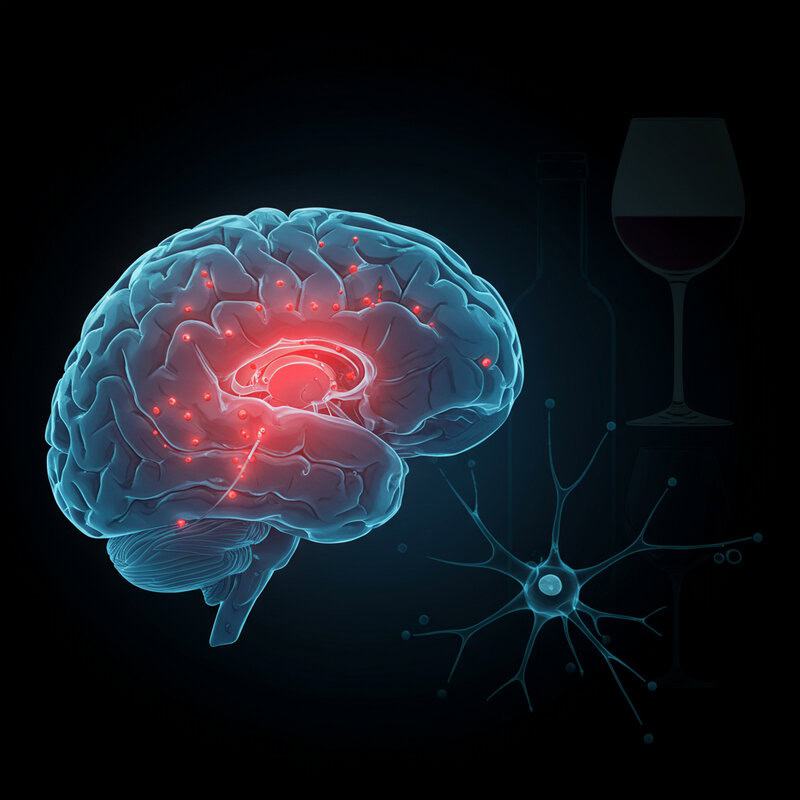
Alcohol consumption has a notable suppressive effect on orexin activity, contributing to drowsiness, impaired alertness, and disrupted sleep architecture. When alcohol is consumed, it inhibits the firing of orexin-producing neurons in the hypothalamus, reducing wakefulness and often leading to a sense of relaxation or fatigue. This response is in sharp contrast to the effects of caffeine, which blocks adenosine receptors to promote alertness but does not directly stimulate orexin pathways. While caffeine temporarily boosts energy and can mask tiredness, alcohol accentuates feelings of sleepiness and can fragment restorative sleep cycles.
Chronic or excessive alcohol use can further disrupt orexin rhythms, potentially worsening sleep disorders, increasing the risk of nighttime awakenings, and impairing next-day cognitive performance. To support healthy orexin function and overall well-being, moderation is key. Limit alcohol intake, especially in the evening, to prevent interference with your natural sleep-wake cycle. If you choose to drink, aim to do so several hours before bedtime and balance consumption with hydration and nutritious foods. For more on how alcohol and caffeine impact orexin and sleep, consult the Sleep Foundation and research from the National Institutes of Health.
35. Orexin in Children and Teens

Orexin undergoes significant developmental changes from childhood through adolescence, influencing sleep patterns, appetite, and energy regulation. In early childhood, orexin production and signaling are typically robust, supporting the high levels of activity and alertness common in young kids. As children grow, developmental shifts in orexin rhythms contribute to changes in sleep needs and patterns—such as the transition from multiple daily naps to a single overnight sleep period. In teens, hormonal changes and shifts in circadian timing can impact orexin levels, sometimes leading to sleep phase delays and increased vulnerability to sleep disorders.
Examples of childhood sleep disorders linked to orexin include narcolepsy and idiopathic hypersomnia, both characterized by excessive daytime sleepiness, sudden sleep attacks, and difficulty maintaining attention. Parents should monitor for warning signs such as persistent fatigue, frequent napping beyond toddler years, unexplained changes in appetite, mood swings, or unusual nighttime behaviors. Early recognition of these symptoms is crucial for timely evaluation and intervention. For more information on orexin’s developmental role and childhood sleep health, visit the Sleep Foundation or consult research from the National Institutes of Health.
36. Environmental Toxins and Orexin

Environmental toxins and pollutants can significantly disrupt orexin signaling, affecting sleep, appetite, and stress responses. Exposure to chemicals such as pesticides, heavy metals (like lead and mercury), and air pollutants has been linked to neuroinflammation and oxidative stress, both of which can impair the function of orexin-producing neurons in the hypothalamus. Urban environments typically present a higher risk of exposure to such toxins due to increased industrial activity, traffic emissions, and densely populated living conditions, compared to rural settings where air and environmental quality may be better and exposure risks lower.
Symptoms of impaired orexin signaling due to environmental toxins may include persistent fatigue, difficulty concentrating, irregular sleep patterns, and mood disturbances. To minimize risk, practical steps include using air purifiers indoors, ventilating living spaces, choosing organic produce when possible, reducing use of chemical-based cleaners, and staying informed about local air quality indexes. Additionally, advocating for policies that reduce pollution can have a broader positive impact. For more information on the effects of environmental toxins on brain health and orexin, consult studies from the National Institutes of Health and prevention guidelines from the Sleep Foundation.
37. Orexin and Blood Sugar Regulation
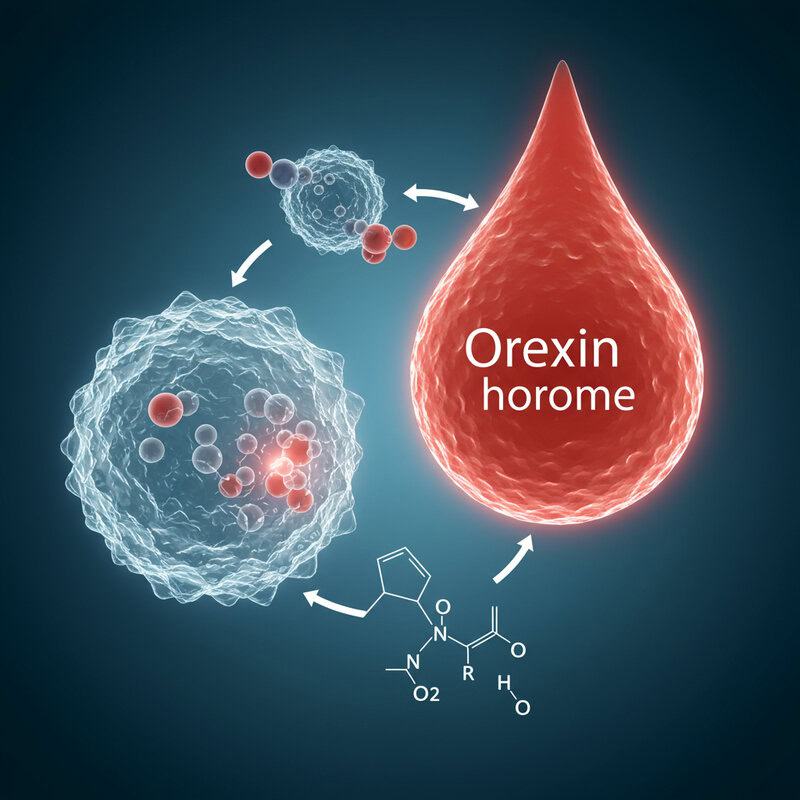
Orexin is intricately involved in the regulation of blood sugar, playing a complementary role alongside insulin to maintain glucose balance. While insulin is responsible for lowering blood glucose by facilitating its uptake into cells after meals, orexin helps stabilize energy supply by promoting alertness and triggering hunger when levels drop. Research indicates that orexin-producing neurons can sense glucose fluctuations and adjust their signaling accordingly—stimulating arousal and food-seeking behavior during low blood sugar states and reducing activity when sufficient glucose is available.
Blood sugar swings that involve rapid peaks and crashes can disrupt orexin signaling, leading to symptoms like sudden fatigue, irritability, brain fog, and intense hunger. Such patterns are common in individuals with poorly managed diabetes, irregular eating habits, or diets high in refined carbohydrates. Recognizing signs of glucose instability—such as shakiness, mood changes, or trouble concentrating—can prompt timely dietary adjustments and medical intervention if needed. For further reading on orexin and blood sugar regulation, explore research from the National Institutes of Health and blood sugar management advice from the Sleep Foundation.
38. The Role in Seasonal Affective Disorder

Orexin is increasingly recognized as a contributing factor in Seasonal Affective Disorder (SAD), a mood disorder characterized by depression-like symptoms that occur during the darker months of the year. Reduced exposure to natural sunlight in winter can disrupt the normal rhythmic release of orexin, leading to lower levels of daytime alertness, increased fatigue, changes in appetite, and a general sense of sluggishness. While melatonin imbalances are well-known drivers of SAD—since melatonin rises earlier and stays elevated longer in low-light conditions—orexin’s decline further compounds symptoms by diminishing motivation and mental energy.
Unlike melatonin, which primarily affects sleep timing and quality, orexin is responsible for maintaining wakefulness and drive. Imbalances in both hormones can lead to persistent low mood, oversleeping, carbohydrate cravings, and withdrawal from social activities. Steps for managing seasonal mood changes include maximizing exposure to daylight (or using bright light therapy), maintaining a regular sleep-wake schedule, and staying physically and socially active even during darker months. For more on orexin’s role in SAD and strategies for seasonal mood management, review resources from the Sleep Foundation and recent studies from the National Institutes of Health.
39. Orexin and Chronic Fatigue Syndrome
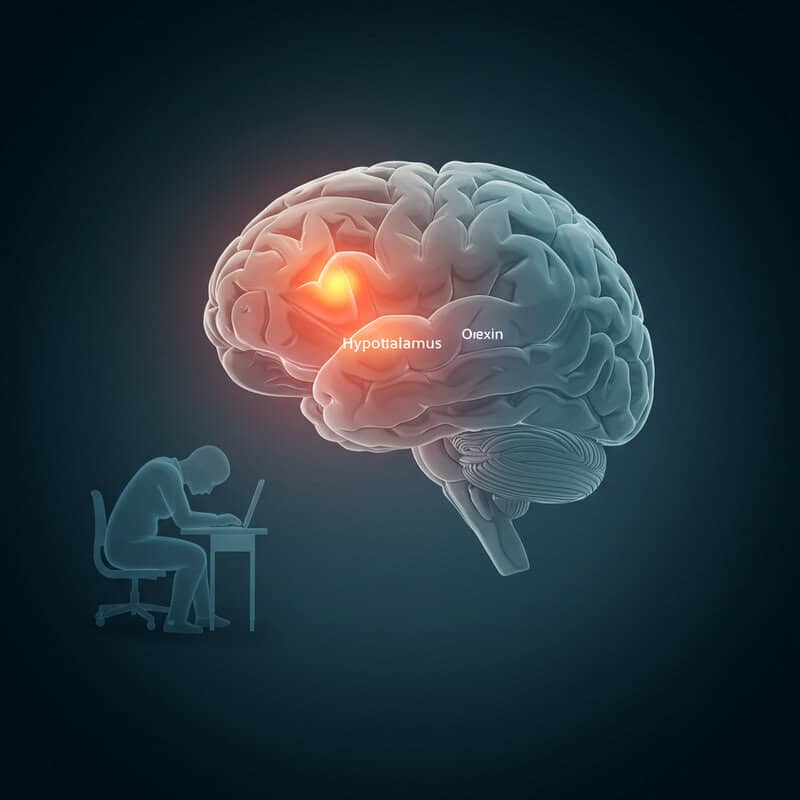
Growing evidence suggests a possible link between orexin dysfunction and Chronic Fatigue Syndrome (CFS), also known as Myalgic Encephalomyelitis (ME/CFS). CFS is characterized by persistent, unexplained fatigue that is not relieved by rest and significantly impairs daily function. Some research indicates that individuals with CFS may have lower orexin levels or impaired orexin signaling, which could contribute to extreme tiredness, poor sleep quality, and reduced motivation. These symptoms closely parallel those seen in orexin-deficient disorders such as narcolepsy, though CFS typically lacks the abrupt sleep attacks present in narcolepsy.
Real-world comparisons show that both CFS and orexin-related disorders involve difficulties with sustained alertness, concentration, and physical performance. If fatigue is accompanied by unrefreshing sleep, cognitive “fog,” muscle pain, or post-exertional malaise, it may signal a deeper neurobiological imbalance. Individuals experiencing these persistent symptoms should consider seeking evaluation from a specialist familiar with CFS and sleep medicine. Early intervention and a multidisciplinary approach can help with diagnosis and management. For more on the relationship between orexin and CFS, see research from the National Institutes of Health and guidance from the Sleep Foundation.
40. The Influence of Medications

Various medications can alter orexin levels and, consequently, impact sleep, alertness, and appetite. Some modern sleep aids, such as orexin receptor antagonists (e.g., suvorexant), intentionally suppress orexin signaling to treat insomnia by facilitating sleep onset and maintenance. In contrast, certain antidepressants may indirectly increase orexin activity by modifying neurotransmitter balance, potentially improving motivation and daytime energy. Stimulants often prescribed for attention-deficit disorders, like methylphenidate or amphetamines, can boost both dopamine and orexin pathways, leading to heightened wakefulness and alertness.
However, the effects of these medications can vary widely among individuals, sometimes causing unintended side effects such as insomnia, agitation, appetite changes, or excessive sleepiness. If you are prescribed any of these medications and notice significant shifts in sleep, energy, or appetite, it is crucial to discuss these changes with your healthcare provider. Questions to ask your doctor might include: “Could my medication be affecting my orexin levels?”; “Are there alternatives if I experience unwanted side effects?”; and “How should I monitor for changes in alertness or mood?” For further information, consult the Sleep Foundation and review clinical research from the National Institutes of Health.
41. Orexin and Cardiovascular Health
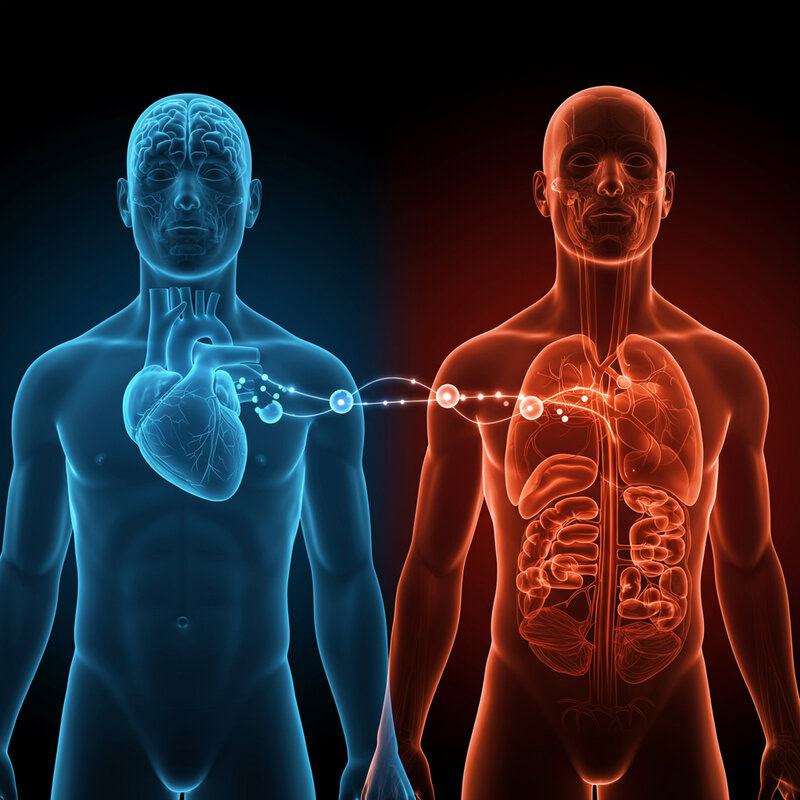
Orexin not only regulates sleep and appetite but also plays a role in cardiovascular health by influencing heart rate and blood pressure. Orexin-producing neurons project to areas of the brain that control autonomic functions, promoting increases in heart rate and blood pressure during periods of wakefulness and heightened alertness. This effect is similar in some ways to adrenaline, which triggers the “fight or flight” response and rapidly elevates cardiovascular activity. However, while adrenaline acts as a short-term, acute stress hormone, orexin helps maintain steady cardiovascular tone over the course of daily activity.
Disruptions in orexin signaling can contribute to abnormal heart rhythms, fluctuations in blood pressure, and even increased cardiovascular risk, particularly in people with sleep disorders such as narcolepsy or chronic insomnia. Warning signs that may indicate cardiovascular involvement include unexplained palpitations, frequent dizziness, morning headaches, or persistent fatigue. If you experience these symptoms, especially in combination with sleep disturbances, it is important to consult a healthcare professional for evaluation. For more on the relationship between orexin and cardiovascular health, explore studies from the National Institutes of Health and practical heart health advice from the Sleep Foundation.
42. The Effects of Fasting on Orexin
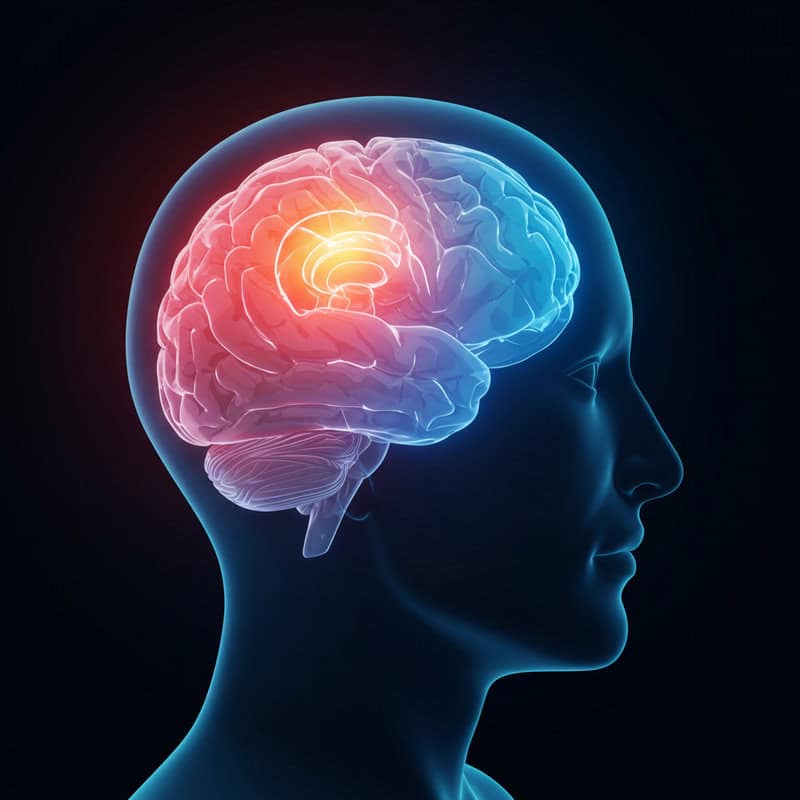
Fasting has a pronounced effect on orexin activity, as periods without food naturally stimulate orexin-producing neurons in the hypothalamus. This increase in orexin promotes alertness, motivation, and the drive to seek food—an adaptive response designed to help individuals remain vigilant and energetic during times of caloric deficit. Intermittent fasting, which involves cycling between periods of eating and fasting (such as 16:8 or 5:2 protocols), can lead to regular boosts in orexin, potentially enhancing mental clarity and energy during fasting windows. Extended fasting amplifies these effects, but may also lead to irritability, anxiety, or sleep disruption if prolonged beyond the body’s comfort zone.
While increased orexin can support alertness during fasting, it is important to approach any fasting regimen with caution. Listen to your body’s signals and avoid pushing fasting periods to the point of fatigue, dizziness, or severe hunger. Stay well-hydrated and break fasts with balanced, nutrient-dense meals. If you have underlying health conditions or take medication, consult a healthcare provider before starting fasting protocols. For more on how fasting impacts orexin and safe fasting practices, review research from the National Institutes of Health and guidelines from the Sleep Foundation.
43. How Sleep Disorders Affect Orexin
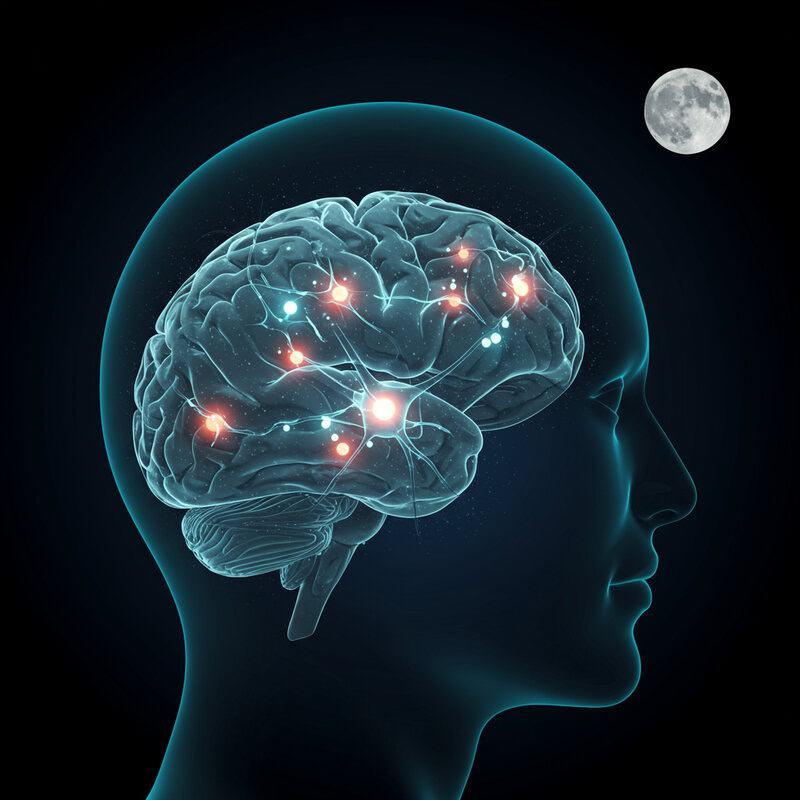
Sleep disorders can significantly disrupt orexin signaling, leading to a cascade of problems involving alertness, appetite, and emotional regulation. In insomnia, chronic inability to fall or stay asleep is often accompanied by dysregulated orexin levels. Some research suggests that overactive orexin signaling may keep the brain in a heightened state of arousal, making restful sleep elusive and contributing to persistent fatigue and irritability. In contrast, conditions like obstructive sleep apnea, where breathing repeatedly stops and starts during sleep, may suppress orexin production due to fragmented sleep and intermittent oxygen deprivation, resulting in excessive daytime sleepiness and cognitive difficulties.
Case examples show that people with insomnia often report feeling “wired but tired,” while those with sleep apnea experience unrefreshing sleep and struggle to maintain alertness during the day. If you notice symptoms such as chronic sleep difficulties, loud snoring, frequent awakenings, or persistent tiredness despite adequate time in bed, it may be time to seek a sleep study. Proper diagnosis can identify the underlying disorder and guide tailored treatment. For more on the relationship between sleep disorders and orexin, consult the Sleep Foundation and research from the National Institutes of Health.
44. Orexin and Hormonal Interactions

Orexin is part of a complex network of hormones that regulate energy, mood, and physiological stability. Its interplay with other hormones, such as thyroid and adrenal hormones, is critical for maintaining balance across multiple bodily systems. Thyroid hormones (like T3 and T4) are essential for metabolic rate and energy production, while adrenal hormones—primarily cortisol—regulate the stress response and help mobilize energy during times of challenge. Orexin works in tandem with these hormones to synchronize wakefulness, metabolism, and alertness. For example, low thyroid function (hypothyroidism) can blunt orexin activity, resulting in fatigue and sluggishness, while excessive cortisol from chronic stress may overstimulate orexin circuits, causing insomnia or anxiety.
These hormonal interactions mean that imbalances in one system can ripple out to affect orexin and overall well-being. If you experience ongoing symptoms such as unexplained fatigue, mood swings, sleep disruption, or changes in appetite, it may be wise to check for broader hormonal imbalances. Blood tests assessing thyroid, adrenal, and other metabolic markers can help pinpoint the root of persistent symptoms. For more on orexin’s hormonal interactions, explore the National Institutes of Health and clinical insights from the Sleep Foundation.
45. The Role in Post-Traumatic Stress
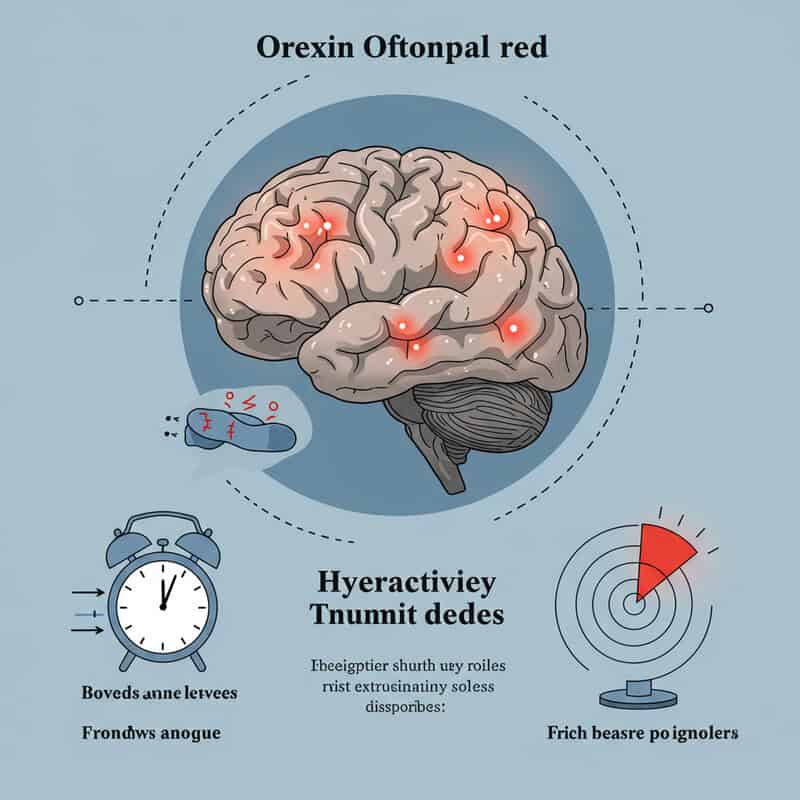
Orexin has emerged as an important player in the neurobiology of post-traumatic stress disorder (PTSD). After traumatic experiences, orexin levels can become chronically elevated, driving hyperarousal, persistent insomnia, and heightened alertness—key features of PTSD. This chronic overactivation differs from the acute “fight-or-flight” reaction driven by cortisol and other stress hormones, which typically resolve once the immediate threat subsides. In PTSD, orexin’s persistent signaling keeps the nervous system on high alert, making it difficult for individuals to relax, sleep, or feel safe even in non-threatening environments.
Recognizing the role of orexin in trauma responses is crucial for trauma-informed care. If you or someone you know experiences ongoing nightmares, sleep disturbances, exaggerated startle responses, or difficulty concentrating after trauma, it may reflect an imbalance in orexin signaling. Trauma-informed care should include strategies to reduce arousal, such as cognitive-behavioral therapy, mindfulness practices, and, when appropriate, medical interventions that target the underlying neurobiology. For more on orexin’s involvement in PTSD and best practices for support, consult reviews from the National Institutes of Health and trauma care resources from the Sleep Foundation.
46. Orexin and Reproductive Health

Orexin’s influence extends into the realm of reproductive health, where it helps regulate fertility, menstrual cycles, and hormonal balance. Orexin-producing neurons in the hypothalamus interact with the reproductive axis, influencing the release of gonadotropin-releasing hormone (GnRH), which is essential for coordinating ovulation and menstrual regularity. Disruptions in orexin signaling—often triggered by chronic stress, poor sleep, or metabolic imbalance—can contribute to irregular cycles, delayed ovulation, or reduced fertility. This effect is distinct from that of estrogen, the primary female sex hormone, which directly controls the development of reproductive tissues and the menstrual cycle’s progression.
Women experiencing chronic fatigue, sleep disturbances, or significant changes in appetite may notice associated disruptions in their reproductive health, including missed or irregular periods and difficulties conceiving. In such cases, it is important to consider the potential role of orexin and its interaction with other hormones. If reproductive concerns persist, consult a healthcare provider specializing in reproductive endocrinology. Addressing sleep, stress, and lifestyle factors can often restore balance. For more on orexin’s role in reproductive health, explore the National Institutes of Health and educational resources from the Sleep Foundation.
47. The Potential for Future Therapies

The discovery of orexin’s crucial role in hunger, sleep, and stress regulation has opened the door to innovative treatments for a range of disorders. Emerging therapies are targeting orexin pathways to address conditions like narcolepsy and insomnia more precisely than ever before. For instance, orexin receptor antagonists—such as suvorexant and lemborexant—are now approved for the treatment of insomnia, working by blocking orexin’s wake-promoting effects to support natural sleep architecture. Conversely, researchers are developing orexin agonists and replacement therapies to help individuals with narcolepsy, whose symptoms stem from orexin deficiency.
As clinical science advances, additional therapies are being investigated for mood disorders, metabolic syndromes, and neurodegenerative diseases, all linked to orexin dysfunction. If you suffer from a condition suspected to involve orexin imbalance and conventional treatments are ineffective, it may be worth exploring clinical trials for novel orexin-targeted therapies. Ask your healthcare provider about ongoing research or visit the ClinicalTrials.gov database for current studies. For further updates on orexin-based treatments, review resources from the Sleep Foundation and research from the National Institutes of Health.
48. Monitoring Orexin: Tests and Tools

Measuring orexin levels in the body is a specialized process, as the hormone is primarily produced in the brain and does not circulate widely in the bloodstream. The most definitive method for assessing orexin is through the analysis of cerebrospinal fluid (CSF), obtained via a lumbar puncture (spinal tap). This test is most often used in the diagnosis of narcolepsy, particularly type 1, where orexin deficiency is a hallmark. While highly accurate, CSF testing is invasive and not routinely performed unless there is a strong clinical suspicion of a central disorder like narcolepsy.
More commonly, healthcare providers rely on symptom-based screening tools, sleep studies, and detailed medical histories to infer possible orexin dysfunction. These assessments focus on patterns of sleepiness, sudden muscle weakness, appetite changes, and mood fluctuations. If you are concerned about symptoms that may be linked to orexin imbalance, discuss with your provider whether specialized testing is indicated, what the risks and benefits are, and how results might guide treatment. For more on orexin measurement, see the MedlinePlus Genetics overview and practical diagnostic guidelines from the Sleep Foundation.
49. When to Seek Help for Orexin Issues

Recognizing when to seek help for potential orexin imbalance is crucial for timely intervention and effective management. Warning signs include persistent daytime sleepiness, unexplained fatigue, difficulty staying awake or alert, frequent sleep disruptions, sudden muscle weakness (cataplexy), intense hunger or appetite swings, and mood fluctuations such as anxiety or depression. Mild symptoms may manifest as occasional tiredness, sporadic trouble concentrating, or slight changes in appetite—often mistaken for stress or busy schedules. However, severe symptoms such as repeated sleep attacks, hallucinations while falling asleep or waking, pronounced mood instability, or significant weight changes point to a more serious orexin-related disorder.
If symptoms are persistent, worsening, or interfere with daily life, it’s recommended to consult a primary care provider or sleep specialist. Next steps may involve maintaining a sleep and symptom diary, undergoing a sleep study, or exploring further neurological or hormonal testing. Early specialist care can help pinpoint underlying issues and open doors to targeted therapies. For more on when and how to seek help for orexin-related symptoms, consult the Sleep Foundation or review clinical guidance from the National Institutes of Health.
50. Supporting Healthy Orexin Levels

Maintaining healthy orexin levels relies on a combination of lifestyle habits that support balanced sleep, energy, and mood. Evidence shows that regular sleep schedules, exposure to natural daylight, and consistent physical activity are among the most effective ways to promote optimal orexin signaling. Eating balanced meals rich in protein, complex carbohydrates, and healthy fats—while avoiding excessive sugar and processed foods—helps stabilize energy levels and prevent disruptive hunger swings. Stress management techniques such as mindfulness, meditation, and deep breathing further assist in keeping orexin and related stress hormones in check.
Comparing lifestyle interventions, those who prioritize sleep hygiene, engage in daily movement, and follow structured meal times tend to report better alertness, mood, and weight control than those with erratic routines. Practical routines for supporting orexin include aiming for 7-9 hours of sleep, spending time outdoors during the day, scheduling regular exercise, and taking short movement breaks if sedentary. Limiting alcohol, caffeine late in the day, and bright screen exposure before bedtime also enhance orexin balance. For more detailed strategies, review resources from the Sleep Foundation and recent findings from the National Institutes of Health.
Conclusion

Orexin is a vital yet often overlooked hormone that orchestrates hunger, sleep, stress, and overall well-being. Subtle symptoms—like persistent fatigue, sleep disruptions, or appetite changes—can easily be dismissed, increasing the risk of more serious health concerns if left unaddressed. Recognizing these signs early allows for timely screening, such as sleep studies or symptom-based assessments, plus targeted lifestyle adjustments. Prioritizing sleep hygiene, balanced nutrition, and daily physical activity can help maintain healthy orexin levels and enhance quality of life. For further guidance, consult resources from the Sleep Foundation and explore screening options recommended by the National Institutes of Health.
Disclaimer
The information provided in this article is for general informational purposes only. While we strive to keep the information up-to-date and correct, we make no representations or warranties of any kind, express or implied, about the completeness, accuracy, reliability, suitability, or availability with respect to the article or the information, products, services, or related graphics contained in the article for any purpose. Any reliance you place on such information is therefore strictly at your own risk.
In no event will we be liable for any loss or damage including without limitation, indirect or consequential loss or damage, or any loss or damage whatsoever arising from loss of data or profits arising out of, or in connection with, the use of this article.
Through this article you are able to link to other websites which are not under our control. We have no control over the nature, content, and availability of those sites. The inclusion of any links does not necessarily imply a recommendation or endorse the views expressed within them.
Every effort is made to keep the article up and running smoothly. However, we take no responsibility for, and will not be liable for, the article being temporarily unavailable due to technical issues beyond our control.





